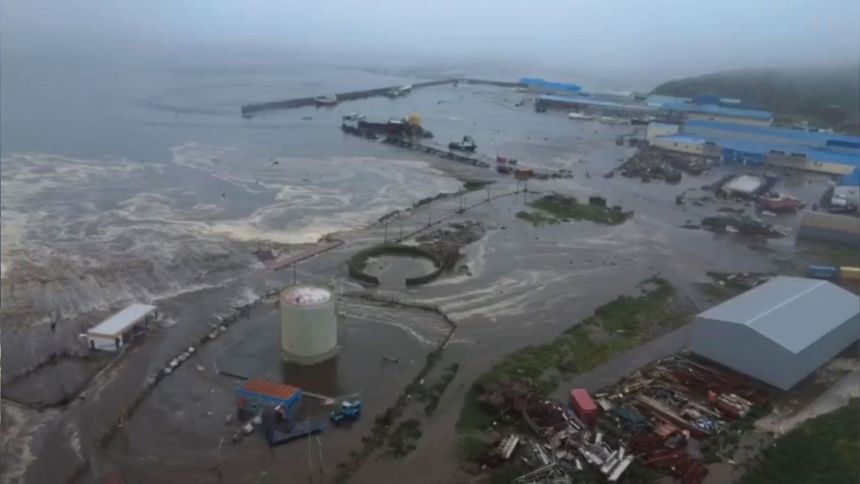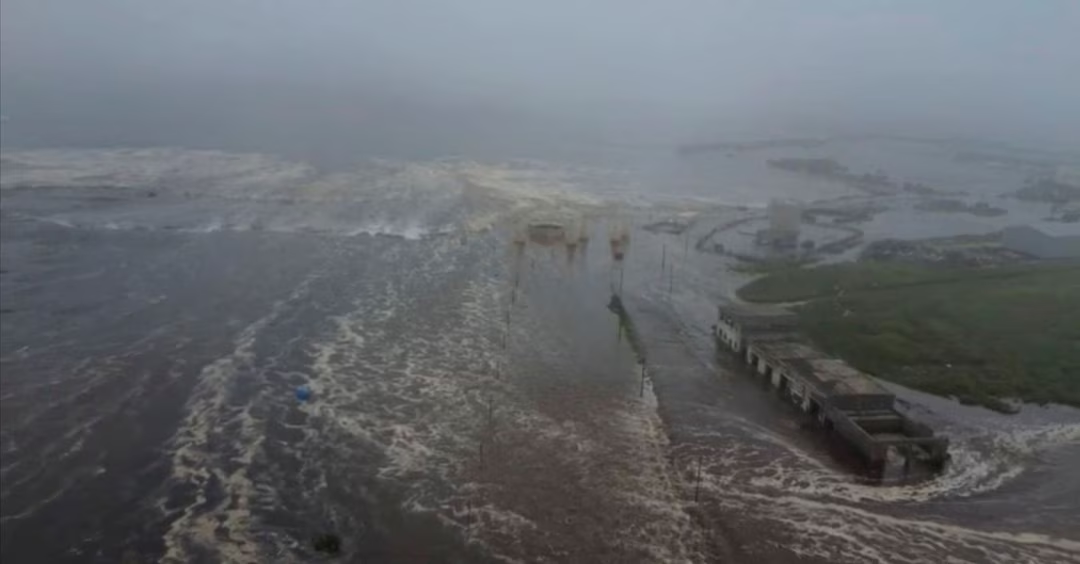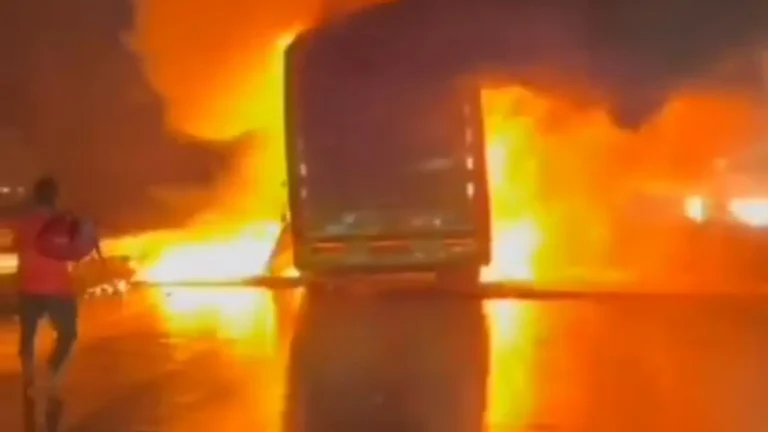Kamchatka, Russia — September 13, 2025 — A powerful earthquake measuring 7.4 on the Richter scale struck off the coast of Russia’s Far Eastern Kamchatka Peninsula early Saturday morning, shaking homes, triggering tsunami alerts, and sending waves of concern across the Pacific. The tremor, which rattled buildings and was felt hundreds of kilometers away, fortunately caused no major damage or reported casualties, according to local authorities and international monitoring agencies.
This sudden seismic event has drawn global attention not only for its strength but also because of the region’s volatile geology. Kamchatka sits on the Pacific “Ring of Fire”, a horseshoe-shaped belt of intense seismic and volcanic activity that produces the majority of the world’s strongest earthquakes and volcanic eruptions.
Strong Quake Strikes Near Petropavlovsk-Kamchatsky
According to the United States Geological Survey (USGS), the epicenter was located about 111 kilometers (69 miles) east of Petropavlovsk-Kamchatsky, the administrative center and largest city of the Kamchatka region. The quake struck at a depth of around 39.5 kilometers beneath the seabed, a depth considered shallow enough to generate strong shaking on the surface.
Residents of Petropavlovsk-Kamchatsky described being jolted awake by violent shaking that lasted nearly a minute. Windows rattled, household items tumbled from shelves, and power flickered briefly in some areas. “It felt like the entire building was rolling,” said local resident Anastasia Petrovna. “We ran out into the cold thinking a bigger one might follow.”
Initially, the quake was reported as magnitude 7.5, but the USGS later revised it slightly downward to 7.4 after further analysis of seismic data.
Tsunami Warnings Issued and Lifted
Soon after the quake hit, the Pacific Tsunami Warning Center (PTWC) issued a tsunami advisory, warning that hazardous waves up to one meter high could strike coastal areas of Russia’s Far East, particularly along the eastern coastlines of Kamchatka and the Kuril Islands. Sirens were activated in several coastal towns, and authorities advised residents in low-lying areas to move to higher ground.
However, within a few hours, the PTWC withdrew the warning after monitoring sea-level gauges and finding no significant tsunami waves generated by the earthquake. Local emergency services confirmed that no evacuations had been required, and life quickly returned to normal.
“This is a reminder of how quickly nature can shift,” said Aleksandr Khabarov, head of Kamchatka’s emergency response unit. “Our systems worked as intended, and thankfully, this time there was no destruction.”
No Reported Casualties or Major Damage

As of Saturday evening, Russian authorities confirmed that there have been no reported deaths, injuries, or structural damage from the earthquake. The Ministry of Emergency Situations (EMERCOM) deployed rapid assessment teams to coastal villages and towns to inspect infrastructure, power lines, and roads. All major facilities, including airports, seaports, and hospitals, are reported to be operating normally.
Seismologists noted that the earthquake occurred offshore, which significantly reduced its impact on populated areas. If the same magnitude had struck directly beneath Kamchatka’s cities, the damage could have been catastrophic.
Kamchatka: A Hotspot of Seismic and Volcanic Activity
The Kamchatka Peninsula is one of the most geologically active regions on Earth, with more than 300 volcanoes (29 of them active) and frequent seismic activity. It lies at the meeting point of several major tectonic plates, making it prone to large earthquakes. In July 2025, the region was rocked by an even stronger 8.8-magnitude earthquake, which triggered temporary tsunami warnings across the Pacific but also resulted in minimal damage.
Experts say these powerful quakes are part of the natural release of tectonic stress in the area. “Kamchatka will always be seismically active,” explained Russian geologist Dr. Irina Volchkova. “The key is to be prepared, to have strong building codes and emergency systems in place.”
Global Concern and Preparedness
Although the September 13 quake caused no major destruction, it has once again raised awareness about earthquake preparedness worldwide. Large offshore quakes have the potential to create devastating tsunamis, as seen in the 2011 Japan earthquake and the 2004 Indian Ocean disaster.
Countries along the Pacific Rim, including Japan, the United States, Canada, and Chile, closely monitored the Kamchatka quake for any sign of trans-Pacific wave activity. Many international disaster agencies praised Russia’s quick communication and the swift lifting of the tsunami alert once the threat had passed.
“This event was a success story for early-warning systems,” said Dr. Maria Gonzales, a tsunami expert at the PTWC. “Rapid detection and clear communication saved lives, even though the danger ultimately didn’t materialize.”
Powerful Message
For residents of Kamchatka, the earthquake was a frightening reminder of the forces constantly moving beneath their feet. Authorities have urged locals to remain vigilant for potential aftershocks, which can sometimes occur days or even weeks after a major quake. Emergency drills and awareness campaigns are planned in schools and public buildings in the coming weeks.
While nature’s power cannot be controlled, the swift and coordinated response to this earthquake shows how preparation can dramatically reduce risks. The Kamchatka earthquake of September 13, 2025, may not have caused destruction, but it has delivered a powerful message: stay prepared, stay informed, and never underestimate the Earth.









